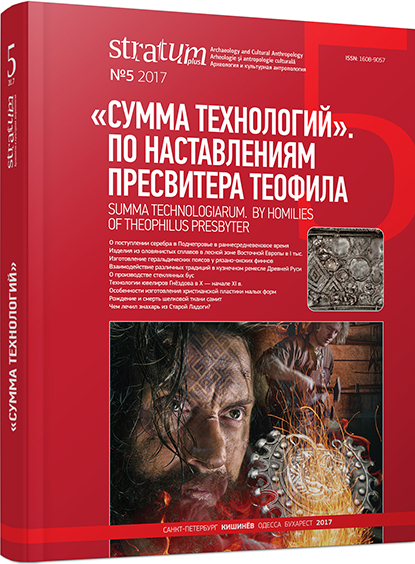Прусская чеканка по серебру в XI—XIV вв.
Prussian Silver Repousse in the 11th—14th Centuries
Author(s): Vladimir Ivanovich KulakovSubject(s): History, Archaeology, Middle Ages
Published by: Издательский дом Stratum, Университет «Высшая антропологическая школа»
Keywords: Baltic region; Viking Age; Old Prussians; Curonians; weapons; iron; silver; ornament
Summary/Abstract: The iron objects decorated with silver repousse are typical for the Western Baltic cultures of the first millennium AD. Special attitude of the Balts to color white (and, accordingly, to silver), its sacralization played a decisive role for clad objects in the culture of the early medieval Baltic. Cult and status weapons decorated with silver repousse, ceremonial details of horse caparison used as sacrifice attributes by the 14th century had turned into prestigious accessories of a representative set of items which could identify their owner as the nobility. So the western Balts were developing a set of social markers, which got reflected even in Prussian onomastics. Glando Kambilo’s name, the ancestor of the Romanovs’, who “came out of the Prussians”, could be translated from Prussian as “Shine of the Terrible Pole-Axe”. It is possible that the legendary founder of the glorious Russian dynasty possessed the right to own sacrificial weapons decorated with silver repousse while in his Prussian homeland.
Journal: Stratum plus. Археология и культурная антропология
- Issue Year: 2017
- Issue No: 5
- Page Range: 247-256
- Page Count: 10
- Language: Russian
- Content File-PDF

